Our Verdict
Homefront: The Revolution feels slapdash, and after the initial fun of learning its systems, drab repetition reveals obvious exploits.
PC Gamer's got your back
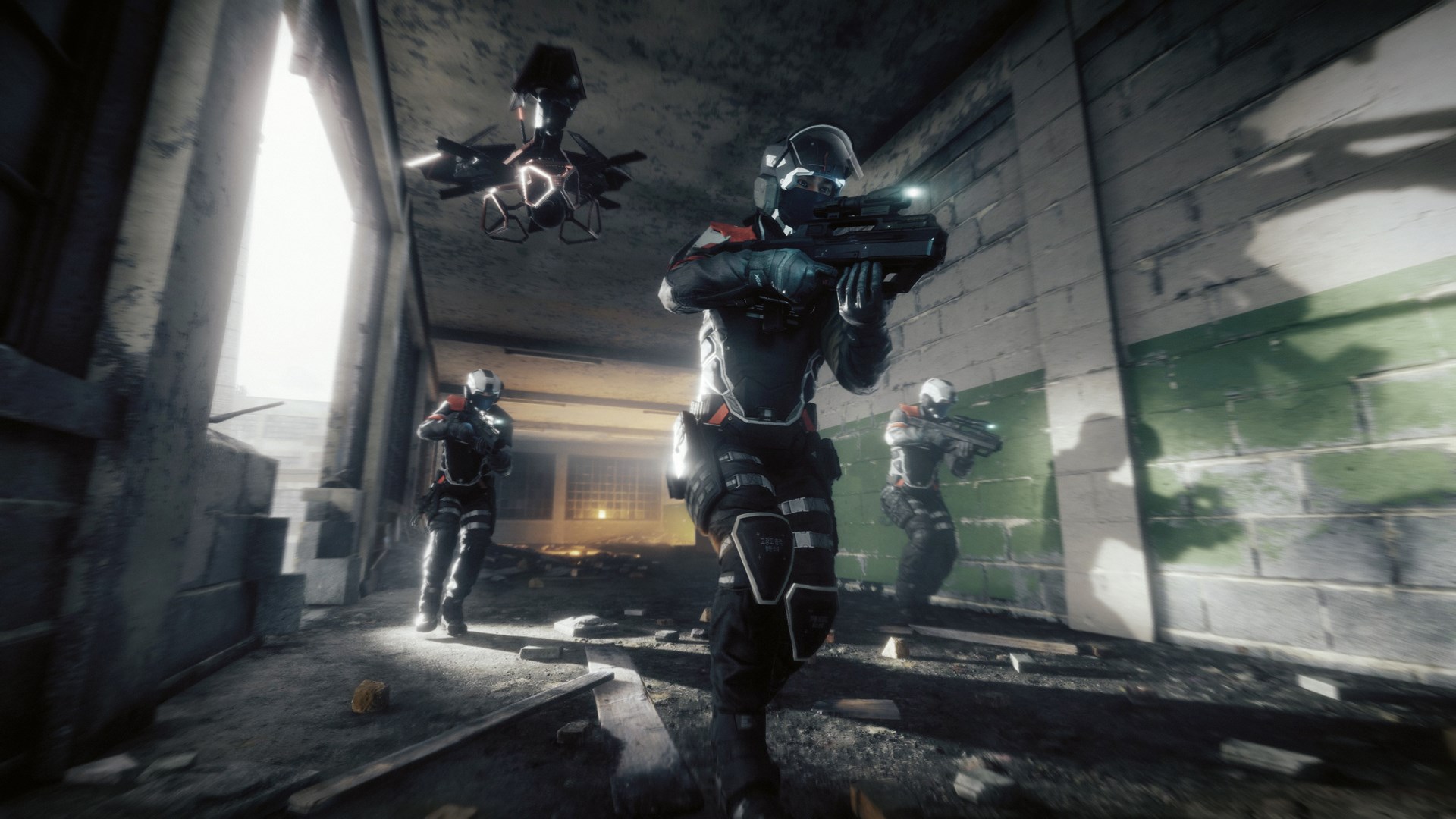
What is it? An open-world shooter set in a Philadelphia under oppressive North Korean control.
Reviewed On: Windows 10, i5 3570k, 8GB Ram, GTX Titan
Price: $60 / £40
Release Date: Out now
Publisher: Deepsilver
Developer: Dambuster Studios
Multiplayer: 4-player co-op in a selection of six missions
Link: https://www.homefront-game.com/age/
A resistance is boiling beneath Philadelphia. In abandoned subway tunnels and boarded-up apartments, American liberation fighters are hoarding weapons and hatching plans. To stay undetected, they carefully spray paint “No Norks” over safehouse entrances to signal to their North Korean occupiers: ‘Hey, don’t come in here, please.’
Gotta love that videogame graffiti. NPC dialogue is fun too, especially the guy who simply yelled “America!” at me after I captured a police station. Then there’s the voice on the radio that congratulates me for acts he couldn’t have seen, like when I silently sneaked up behind a soldier and took him out with my knife. Crackle crackle, “Good Job, Brady!”
Homefront: The Revolution is a mash of the past 15 years of shooters, full of story contrivances and designs I’ve played and criticized before: the goofy graffiti, the bad NPC chatter, the ‘keep the tank safe’ mission, the ‘break out of the prison without your equipment’ mission. It’s done just well enough to not be a total wash—I had fun for a good five hours or so of the 10-plus hour campaign—but its bleak tale eventually becomes a bland smear of muddy buildings, uninteresting guns, and repeated objectives. The story is fine and acted well enough (people shouting at each other about whether violence or pacifism is good), but it fails to pair much originality with the still-fresh premise of a Red Dawn-style US occupation.
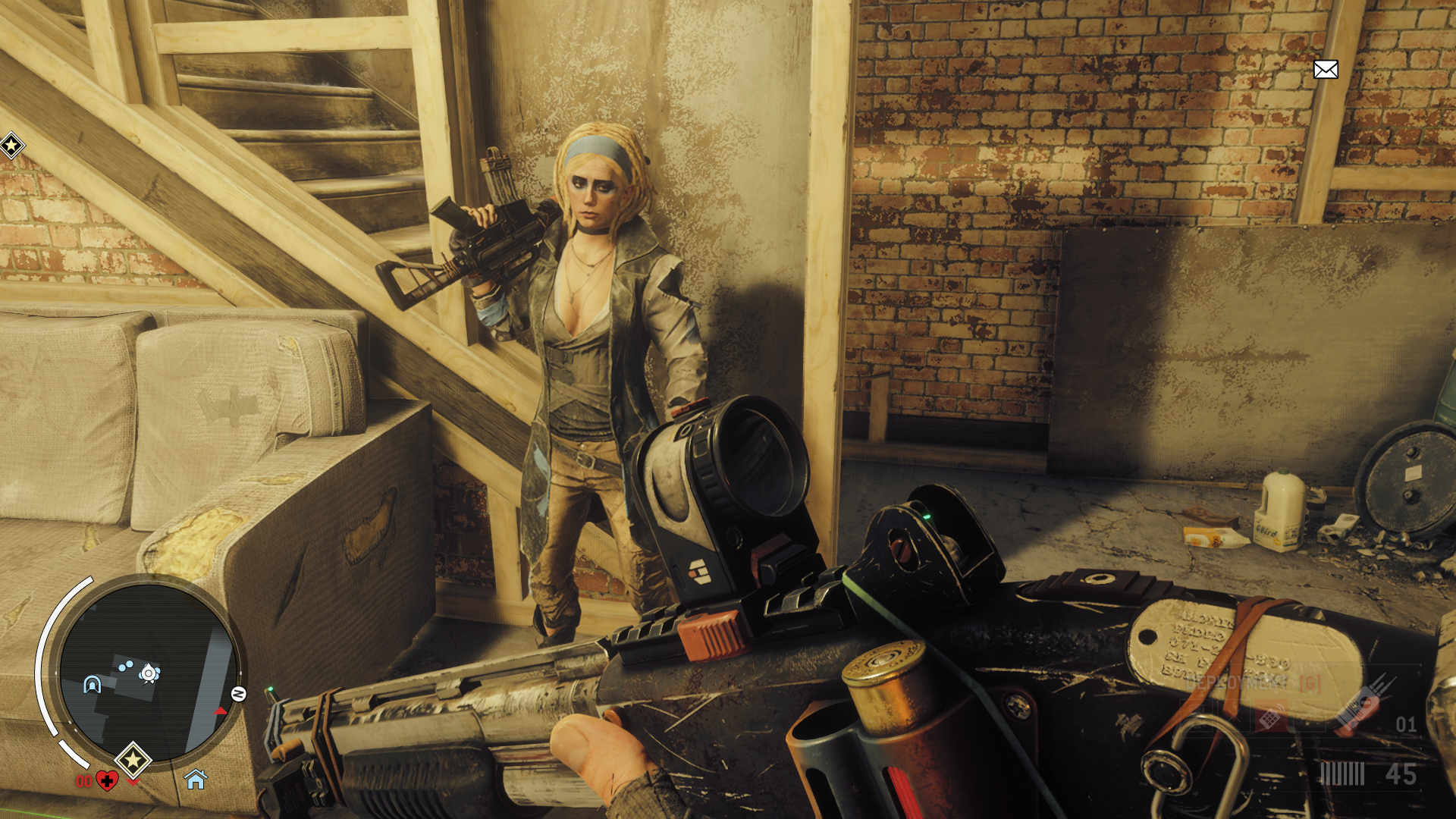
Run and run
There's a lot of Half-Life 2 influence in Homefront's light platforming, and especially the perspective: You play as a silent, first-person protagonist taking orders from a charismatic, militant leader, sabotaging generators, saving civilians from police brutality, and recapturing bits of a crumbling, dystopian Philadelphia. There are even hovering drones that scan your face.
The campaign’s open world, however, is more Far Cry-like, though less visually exciting, and with no good reason to backtrack once the story has taken you to a new area. City districts are accessed through tunnels, and the campaign is mainly split between red zones and yellow zones. The yellow zones are where most civilians live, some of them North Korean sympathisers, and if you keep your gun hidden and bystanders between you and the police, you can avoid detection. It‘s easier, though, to just run as soon as the detection meter starts filling up. If the alarm goes off, it isn’t too hard to hide out for a bit, GTA style, while the alert meter runs down—though it isn’t very fun, either.
I just ran, I ran so far away.
The same principle goes for the red zones, which are more open rubble fields that are entirely off limits to civilians. I could’ve sneaked around carefully, or driven one of the overpowered, unsteerable motorcycles that get stuck in stuff, but neither of those options are very fun. So I just ran, I ran so far away. I’d be detected by patrolling units—a few soldiers and an APC, often—but no one seemed to bother pursuing me, so I usually got to whatever map marker I was heading to. It’s pointless to get into fights that don’t relate to an objective, anyway—either you kill the squad and go back to the mission you were sprinting toward, or they call in reinforcements and you die.
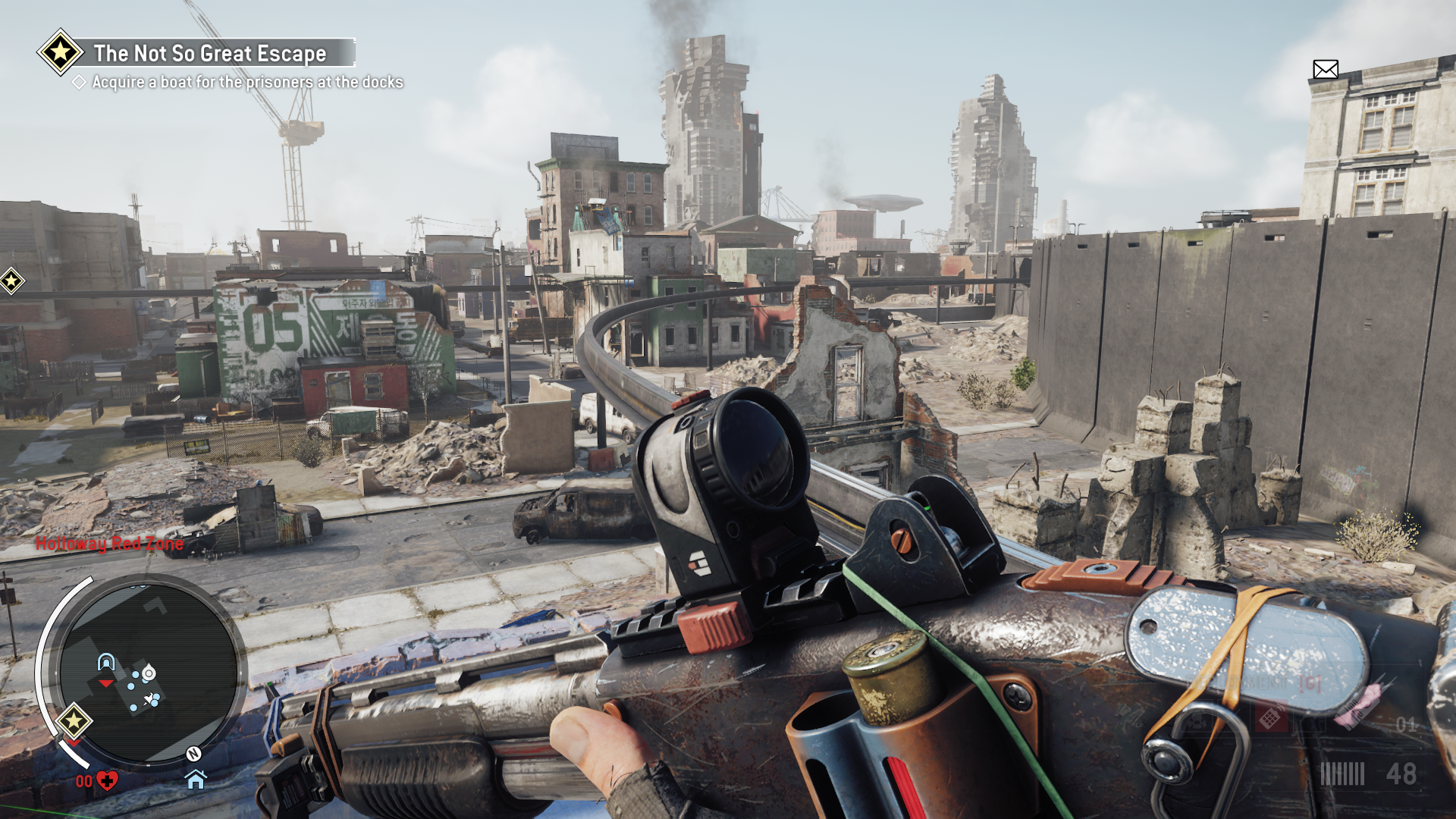
There are lots of useful things to do in both zones, though. The main activity, secondary to whoever the next story mission wants you to meet up with, is capturing Strike Points, which involve mini-platforming puzzles and combat encounters. I like these. They’re pretty quick to do, and there’s a good variety of simple challenges. To get into a future safehouse, you often have to scale a neighboring building to get onto the right bit of scaffolding, then scramble over and through a window. One had me jump a motorcycle onto a rooftop, though after getting frustrated with the slippery bike, I found I could just run up the ramp and leap on foot.
Strike Points are also a chance to get some shooting in that doesn’t feel futile, and that can be fun. On the standard difficulty setting I’m pretty fragile and I run out of ammo quickly, so I’m constantly scrambling between cover and corpses to loot, and the deep ‘bwah’ sound when I score a headshot is a nice touch. But once you do whatever needs to be done to capture a Strike Point—turning on a generator, hacking something—everything resets and you can start fresh in your new safehouse. If a fight was looking bad, I’d just rush to the objective marker to capture the base and trigger the cutscene. And if I died, it wasn’t a big deal. I lost some valuables I’d looted—which I didn’t need because I got plenty of cash from missions—and spawned at the nearest safehouse with the progress I’d made toward objectives preserved.
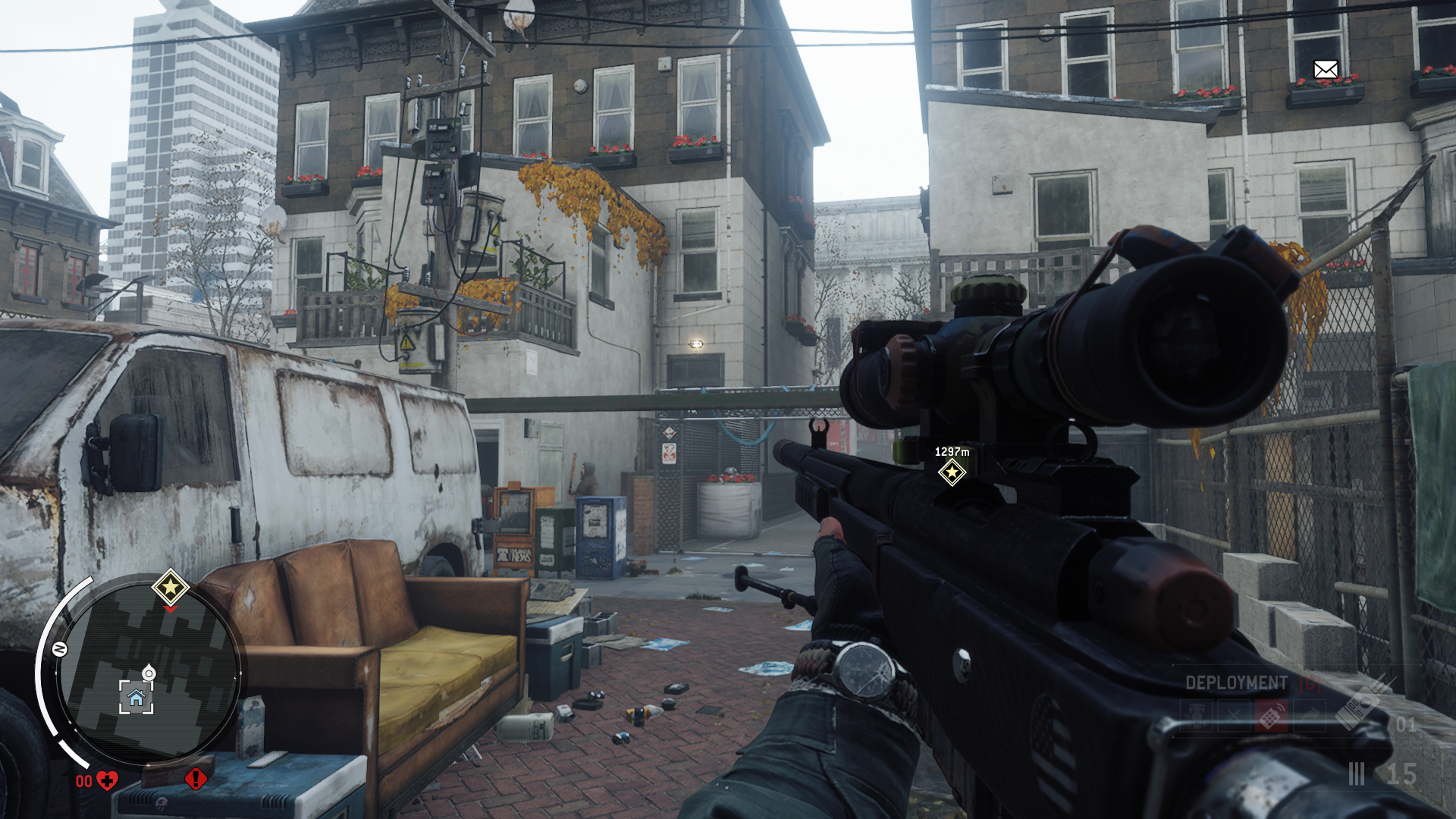
Deadeye
I appreciate that death isn’t frustratingly punishing, but in a better game dying would teach me a lesson. There just aren’t all that many ways to approach Homefront’s missions—certainly not the variety you find in Metal Gear Solid 5 or Far Cry 4. Stealth is limited to throwing distractions and hiding, and the enemy AI can be overbearingly eagle-eyed, or sometimes oblivious to your presence, so I couldn’t find any consistent fun from that approach. You can sneakily drive an RC car up to a patrol and detonate it, but in my experience the dumb things just got stuck on rubble. Since detection feels inevitable, it’s simpler and easier to shoot or run away than to quietly crouch-walk around. And I like shooting, though Homefront doesn’t exactly fill the act with flavor and variety.
There are a few base guns which can be modified on the fly into other weapons. Your starting sidearm, for instance, is a handgun which you can immediately modify into an SMG. I never actually used the base handgun, because there didn’t seem to be any reason to. You can also purchase a pneumatic pistol modification for the handgun, which charges up as you aim for silent, fatal headshots. It’s the coolest gun, but I only used it once—you just don’t run into many situations where you’re taking out lone guards, and if you do you can just use a melee takedown on them.
Since detection feels inevitable, it’s simpler and easier to shoot or run away than to quietly crouch-walk around.
Other weapons and modifications include an assault rifle, crossbow, flamethrower, rocket launcher, a couple shotguns and a blunderbuss. Pretty quickly, I modified my assault rifle into a battle rifle, then a marksman rifle. There’s no perceptible bullet drop, so long distance kills are easy with a sniper scope attachment—that’s disappointing, but I used the marksman rifle constantly because it felt like the most practical weapon.
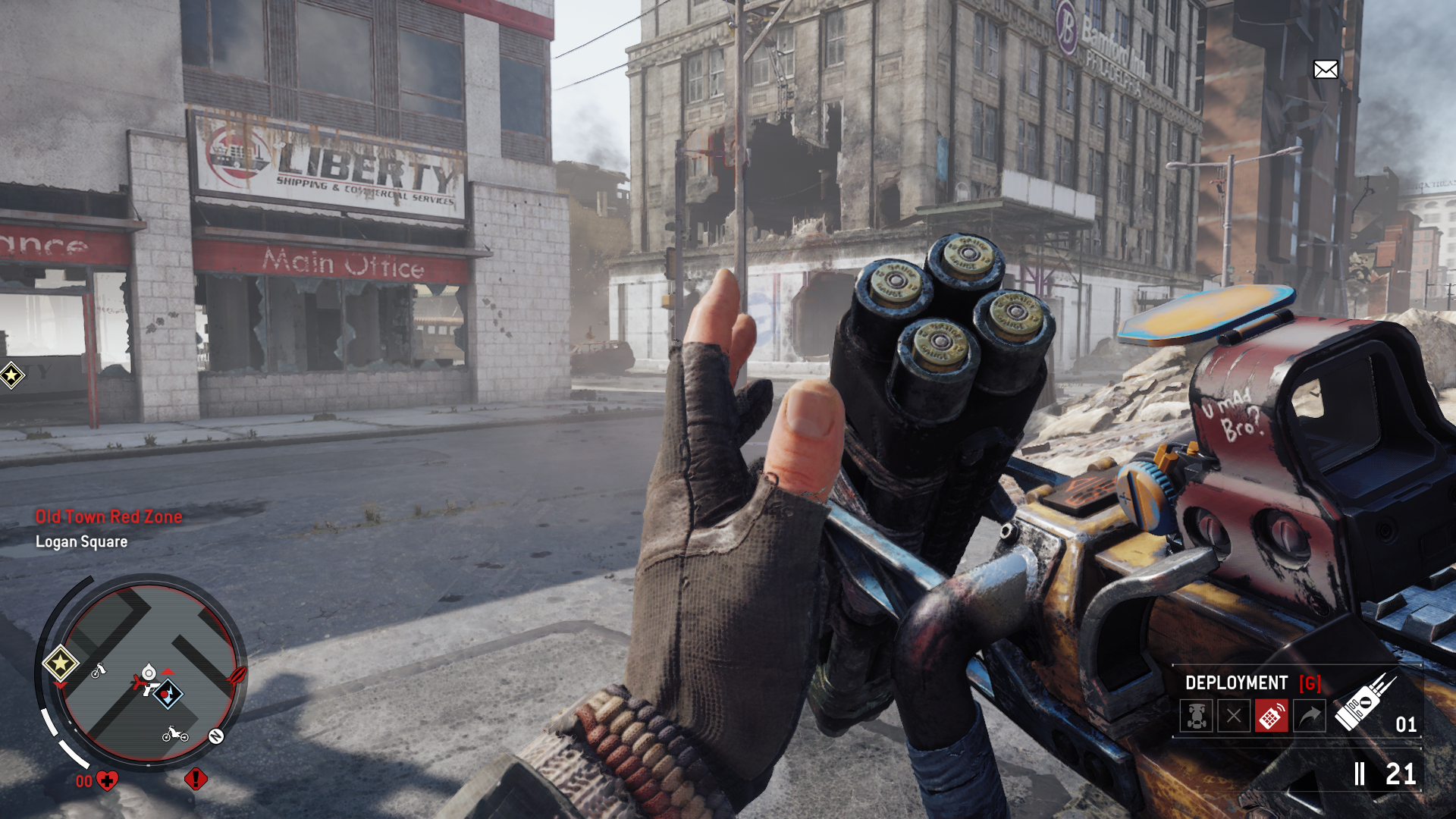
Along with an RPG launcher for taking out vehicles, I relied on the SMG and marksman rifle for nearly the entirety of Homefront. I like that the SMG is pretty jumpy—there’s a good sense that you’re wrestling with it—and the quick animation where you build it by ripping the top off your pistol and snapping on a new mechanism is cool and thematically appropriate for a rag tag resistance fighter. But otherwise, it and the rifle feel like stock videogame weapons. Their makeshift personalities don't extend to firing and reloading like with, say, Metro 2033’s awesome Bastard carbine.
And like the guns, the North Korean occupiers are stock enemies: communist baddies who come in basic infantry flavor, sniper flavor, and heavy, bullet-sponge flavor. They run to cover, or at you, and shoot, with no notable behaviors or abilities—though sometimes you can kite them so they come at you one-by-one, down an alley or across a bridge between buildings.
Skipping frames
Every individual element of Homefront is watery—its twists predictable, its characters simple personifications of ideologies, its guns mostly bland—but all together there is a mildly flavorful to-do list to work through. On a rainy afternoon, I got into a pleasant rhythm, ping-ponging between Strike Points on my way to the main missions (go see this person, capture this stronghold, assassinate this guy), enjoying the satisfaction of accomplishing several small tasks in quick succession. The environments get pretty dull—Philadelphia is a mess, all busted-up brick buildings, makeshift scaffolding, and abandoned parking garages—but there’s a cohesive, somewhat grounded feel to the war-torn city that I appreciate. And it's satisfying, even in a mediocre game, to see a map go from red to blue as I steal away territory and convince the NPC civilians to rise up (which is represented by small clusters of them standing around yelling, or hitting stuff with baseball bats—not exactly the crowd fidelity of Assassin's Creed).
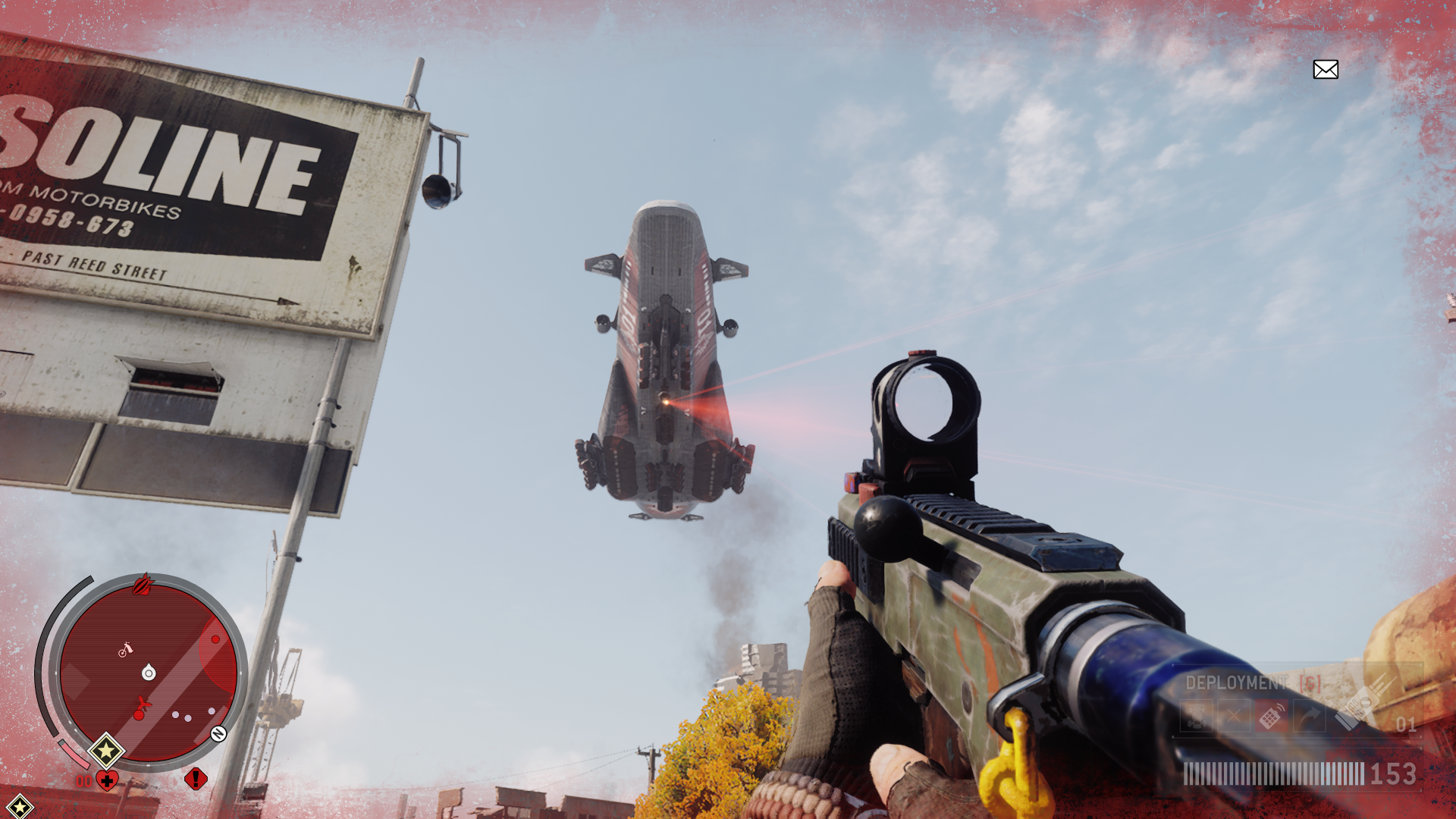
I never felt excited to see a new zone, though, and I grew bored with the only two guns I needed and the identical enemy groups. Some missions are either buggy or weirdly designed, too. To capture one Strike Point, I was meant to clear the soldiers out of an apartment building. I did that, but nothing changed. I lured more soldiers in, which gave them target icons as if they were part of the objective, and killed them, too. Nothing happened. After 20 minutes I just gave up on it.
On the technical side, Homefront barely gets a passing grade. NPCs got stuck in spaces and refused to let me pass, I ran into several hard crashes, and my framerate was always sub-60 even on low settings—plus I experienced bouts of irritating stuttering throughout. My GTX Titan is looking longer in the tooth after the announcement of the GTX 1080, but I didn’t expect so much trouble at 2560x1080 and 1920x1080. Homefront was playable, but not up to my standards, and not for any discernable reason—The Division, for example, both runs better and looks better on my PC.
On top of that, there are no custom save slots, which seems like a weird omission, though I suppose I don’t really want to go back and capture more Strike Zones—after you’ve seen a dozen you’ve seen them all. Homefront: The Revolution was fun early on, when I was experimenting with new weapon modifications and attachments, practicing sneakery and learning the tricks to breaking into and capturing safehouses. But I lost interest once I learned I was best off ignoring its stealth systems and most of its guns, and the story isn’t riveting enough to accommodate hours of running past the same patrols without so much as a different-colored landscape to look at.
Homefront: The Revolution feels slapdash, and after the initial fun of learning its systems, drab repetition reveals obvious exploits.

Tyler grew up in Silicon Valley during the '80s and '90s, playing games like Zork and Arkanoid on early PCs. He was later captivated by Myst, SimCity, Civilization, Command & Conquer, all the shooters they call "boomer shooters" now, and PS1 classic Bushido Blade (that's right: he had Bleem!). Tyler joined PC Gamer in 2011, and today he's focused on the site's news coverage. His hobbies include amateur boxing and adding to his 1,200-plus hours in Rocket League.


